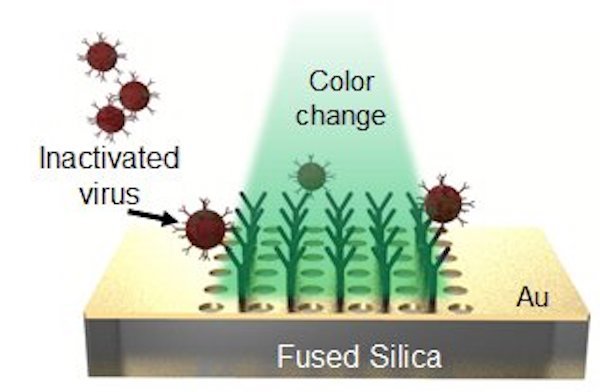
In a new study, researchers have developed a miniscule device that could immediately diagnose and track COVID-19 infection using cell phones.
The research was conducted by a team at George Washington University.
The team originally developed the device with the National Institute of Standards and Technology to detect and distinguish different species of gas.
The device is as small as a strand of hair and covered in a thin layer of gold.
Once the gold surface binds with other molecules, like those of a gas, the wavelength of light bouncing off the surface changes, creating a different-colored light.
Different gasses should, therefore, cause different shifts in light, which artificial intelligence programs could track and learn from.
In the study, the team made the sensor be calibrated directly to test viral infection, rather than the antibodies that may be present in a person’s bloodstream after infection.
The device’s surface could be coated with a reagent, or a solution containing proteins that bind specifically to the SARS-CoV-2 virus that causes COVID-19.
When an infected person’s sample is applied, the virus would bind to the surface, causing an optical change that could immediately be sensed by phone cameras.
The team says these are devices that a public health professional could go out with into the field to administer point-of-care testing, either at a walk-up center or directly in the community,” Dr. Jordan said.
They’re extremely rapid—the turnaround time to having test results is within minutes, and doctors do the testing right there instead of sending the samples to a large commercial laboratory with a massive backlog.
That would allow doctors to say immediately if someone needs to be quarantined and to get the names of their contacts so they can start contact tracing.
The team says the device would allow communities to build trackable real-time databases of infection. People can upload information directly to the cloud.
One researcher of the study is Mona Zaghloul, a professor of electrical and computer engineering from the School of Engineering and Applied Science.
Copyright © 2020 Knowridge Science Report. All rights reserved.



